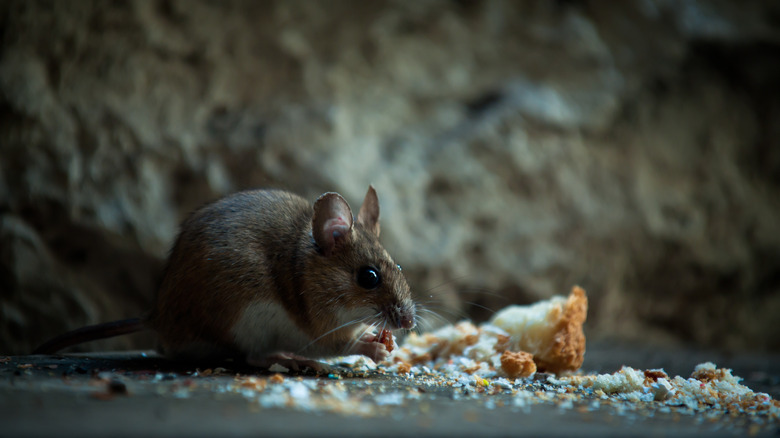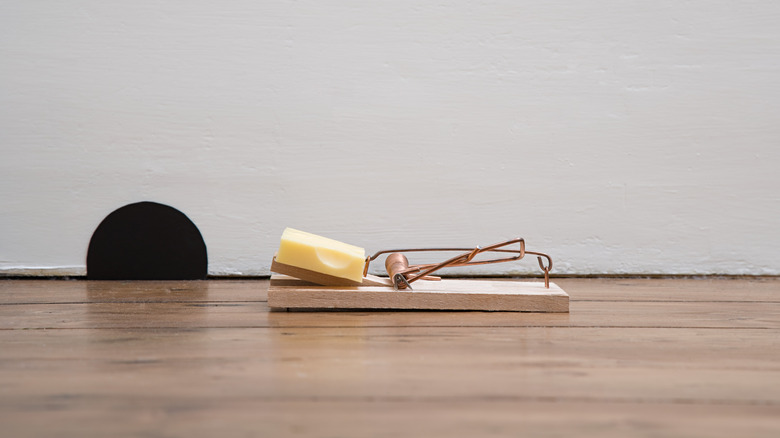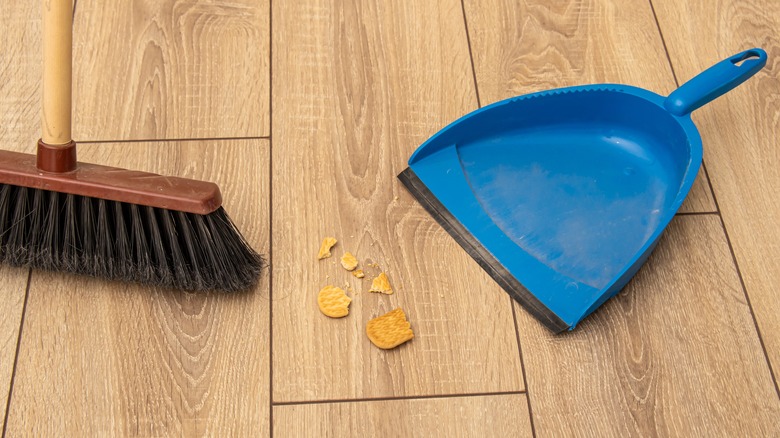The Mouse Trap Baiting Advice You Shouldn't Always Rely On
Mice aren't the best roommates — they eat all your food and don't even pay rent! Oftentimes, they seem to scamper everywhere except over the traps you've so carefully laid out. According to a viral TikTok from a pest management company, if you can figure out which food the mice are currently snacking on in your home (like dog food or birdseed), you'll have the perfect bait for your traps (via TikTok). But House Digest spoke to an expert who says that's not enough for success. "It is good advice, but bait alone won't make a trap successful," Dr. Jim Fredericks, Board Certified Entomologist and Senior Vice President of Public Affairs at the National Pest Management Association, exclusively told House Digest. "Sometimes rodents will be attracted to a novel bait instead."
These variations are why Dr. Fredericks advises calling a pro for help, even if you've only seen one mouse so far. "Even if you've only spotted one mouse, there's likely more hiding out of sight," Dr. Fredericks explained. "Pros rely on knowledge of mouse biology and behavior to ensure that the correct trap is used and it's placed in the most effective location." Your own DIY traps won't be as effective over time without this expertise. If you do want to experiment with this bait tactic, here's how to increase your chances of success.
How to tell what mice are eating
First things first, identify what's currently attracting mice to your home. "Gnaw marks are a telltale sign of what mice are eating in your home," Dr. Fredericks exclusively told House Digest. "Droppings are often left behind in places where food is stored, such as kitchen cabinets or pantries, as well as under sinks, inside chewed cardboard boxes, along baseboards and on top of wall beams." He added that rodents can chew through almost anything in order to get to food or water.
Once you figure out what they're eating, it's important to place your traps in the right spots where mice are actively traveling or nesting. "Rodents tend to leave dark grease or dirt marks along walls and floorboards as they follow a trail throughout the home between their nest and food," Dr. Fredericks said, adding that they tend to nest in "dark, secluded areas."
More crucial steps for success
To get rid of mice long-term, you'll have to do more than just set traps, regardless of what bait is in them. As long as there's plenty of other food, water, and warmth available, they'll continue to nest and reproduce in your house. "Eliminating food sources, like open snack bags or pet food, is a critical step in keeping rodents out of your home," Dr. Fredericks exclusively told House Digest. "Store food in airtight containers, and be sure to clean up crumbs and spills right away."
Dr. Fredericks also advised sealing up small openings that mice may be entering through, noting that they can squeeze through spaces as small as a dime. They like to hide in cluttered spaces, so tidy up and declutter basements, attics, and garages. If you're still having issues after these steps, calling a pro is truly your best bet. "Any infestation — no matter how big or small — is best handled by calling a qualified pest pro who can identify entry points and recommend a plan to safely and effectively handle the situation," Dr. Fredericks said.


